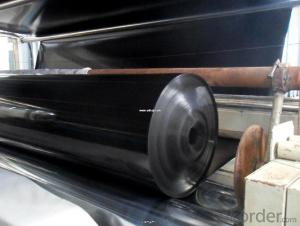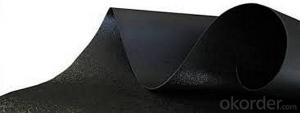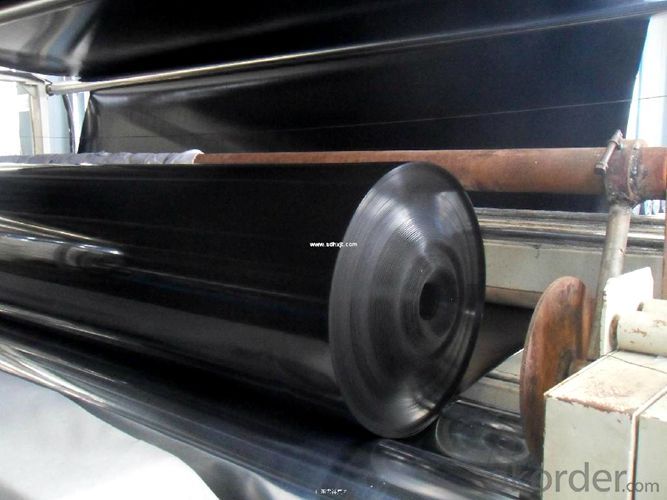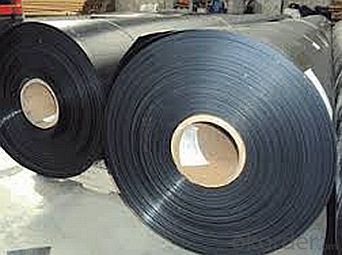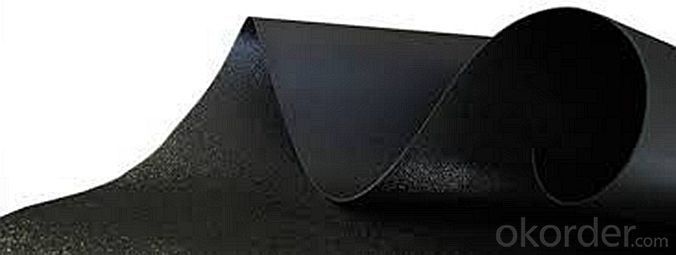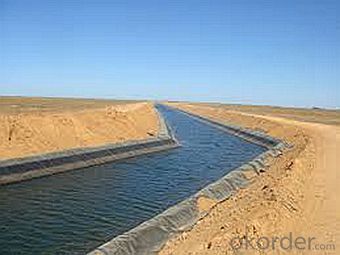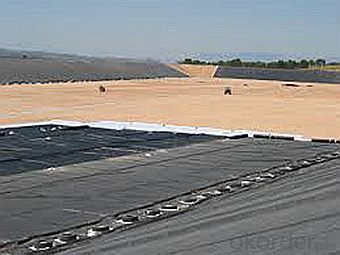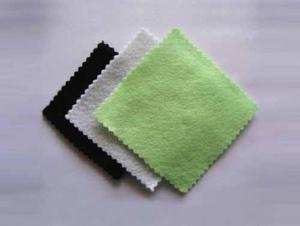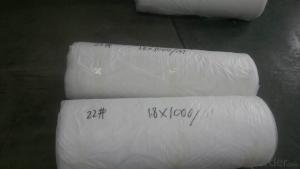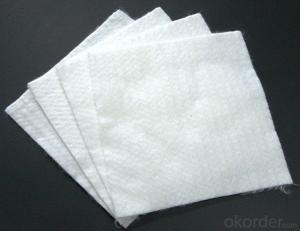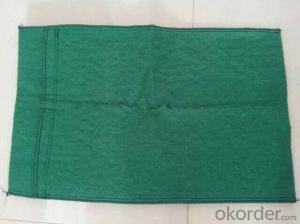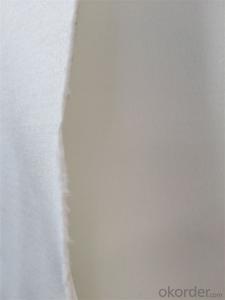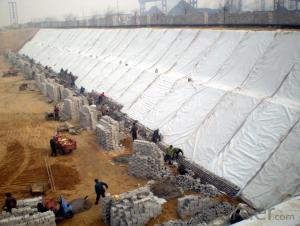Skaps Woven Geotextile Reinforced Linear Low-Density Polyethylene Geomembrane
- Loading Port:
- China main port
- Payment Terms:
- TT OR LC
- Min Order Qty:
- 2000 m²
- Supply Capability:
- 1000000 m²/month
OKorder Service Pledge
OKorder Financial Service
You Might Also Like
Specification
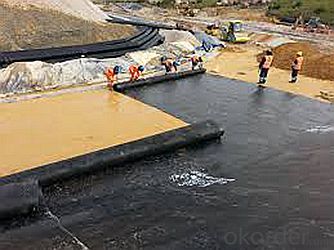
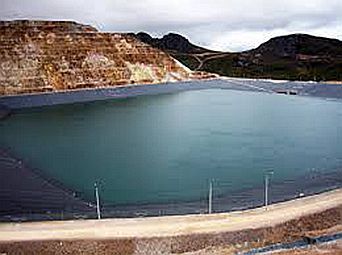
Geo-membrane is produced by a method of three layer co-extrusion model. The raw material is processed at 200°C by fusing and coextrusion, whose basic properties are kept during the producing process.
Material: HDPE, LDPE
Thickness: 1mm-3mm
Width:4m-9m
Quality Inspection Standard: GB/T17643-1998
Quality Control Measure: strictly comply with ISO9001:2000
Have passed the CE certificate in Sep. 2008.
Features:
1) Can bear chemical erosion.
2) A wider using temperature range and a longer using life.
Our Service
Quality assurance
1.On a regular basis or as per your request,we entrust national testing agencies to conduct quality inspections
2. Strictly in accordance with the ISO9001-2008 international quality system standard,we monitor and manage the whole process throughout production,quality testing,and measurement to ensure product quality
3. For quality-related construction delay or substandard construction(except for damage or losses due to customer’s responsibility or irresistible natural disasters),we have refunding,replacement,and repair services.We will respond to customers’ feedbacks on quality issues within 24 hours.
Packing: PLASTIC FILM INSIDE, AND WOVEN BAG OUTSIDE
Shipping: About 15 days after receipt the deposit
FAQ:
Q: What kind of payments does jenor support?
A: T/T, L/C, Cash are accepted.
Q: Do you charge for the samples?
A: Accordeing to our company policy, the samples are free, we only charge the freight fee. And we will return the freight fee during the next order.
Q: Can you produce according to customers' design?
A: Sure, we are professional manufacturer, OEM and ODM are both welcome.
Q: Do you have other products?
A: Yes, please check the pictures:
Packaging & Shipping
- Q: Characteristics of nonwoven geotextiles
- Non-woven geotextile has many advantages: 1) air permeability 2) filterability 3) insulation 4) water absorption 5) waterproof 6) stretch 7) not disheveled 8) feel good, soft 9) light 10) Can be restored 11) without the direction of the fabric 12) compared with the textile production of high productivity, production speed 13) low prices, can be mass production and so on. Disadvantages are: 1) Compared with the textile fabric strength and durability is poor; 2) can not be washed as other fabrics; 3) fiber arranged in a certain direction, so easy to split from the right angle and so on. Therefore, the improvement of the production method has been mainly focused on preventing the improvement of the division.
- Q: What are the types of geogrids?
- Geogrid type is a lot of it, steel-plastic geogrid / convex knot steel-plastic geogrid / overall plastic geogrid / fiberglass geogrid, etc.
- Q: Construction scheme of geotextile water filter
- Second, the design: program one: in strict accordance with the requirements of the national standard construction, 5-year warranty 1, in the smooth level of leveling the overall construction brushing JS waterproof latex or polyurethane waterproof coating, the thickness of the national standard 1 standard; Weak parts to do additional layer to strengthen; 2, do 20 ~ 30mm thick waterproof mortar protective layer, divided into two construction, layer waterproof layer of pulp interface; require nano-silicon waterproofing agent and expansion agent compound use. 3, backfill when asked not to smash the waterproof layer. 4, indoor ground practice ibid, the wall to do high 1m. Option 2: with reference to national standard requirements simple practice, the warranty period of 1 year 1, the overall construction of coated asbestos asphalt waterproof coating or waterproof cold primer, the thickness of the standard by the national standard 2; special weak parts to do additional layer to strengthen; Outside the protection, requiring the use of sticky or sticky sticky construction; 3, backfill when asked not to smash the waterproof layer. 4, indoor ground practice reference program one, the wall to do high 1m.
- Q: How do geotextiles affect groundwater flow?
- Geotextiles can have both positive and negative effects on groundwater flow. When properly installed, they can act as a barrier, reducing the infiltration of surface water into the groundwater system. This can help in controlling erosion and preventing contamination of the groundwater. However, if geotextiles are not installed correctly or become clogged with sediment over time, they may impede the natural flow of groundwater, causing water to accumulate and potentially leading to localized flooding or the alteration of natural recharge patterns. Therefore, the impact of geotextiles on groundwater flow depends on their design, installation, and maintenance.
- Q: Can geotextiles be used in oil and gas industry applications?
- Yes, geotextiles can be used in oil and gas industry applications. They are commonly used as a part of erosion control and sediment containment systems, providing stability and protection to the soil and preventing the migration of sediment into water bodies. Geotextiles can also be used in the construction of access roads, drilling pads, and pipeline trenches to improve their durability and reduce maintenance requirements.
- Q: How do geotextiles contribute to green building certifications?
- Geotextiles contribute to green building certifications by providing sustainable and eco-friendly solutions for various construction applications. They can help improve stormwater management, erosion control, and soil stabilization, reducing the environmental impact of construction projects. By incorporating geotextiles in building designs, projects can meet the requirements of green building certifications that prioritize sustainable practices and materials.
- Q: How do geotextiles affect air quality?
- Geotextiles do not directly affect air quality as they are typically used in civil engineering applications for erosion control, filtration, and reinforcement purposes. However, the selection and installation of geotextiles can indirectly impact air quality by preventing soil erosion, which in turn reduces the release of dust particles into the air.
- Q: What is the number of tensile units for geotextiles
- Geotextile stretch unit number: width of 1 m geotextile in a certain force under the rupture of the strong value. KN / m
- Q: Can geotextiles be used in geotextile wrapped columns?
- Yes, geotextiles can be used in geotextile wrapped columns. Geotextiles are commonly used as a wrapping material for columns in geotechnical engineering applications. They provide reinforcement, prevent soil erosion, and enhance the stability of the column structure.
- Q: How are geotextiles used in civil engineering projects?
- Geotextiles are used in civil engineering projects to provide reinforcement, filtration, drainage, and separation functionalities. They are commonly used to reinforce soil, especially in retaining walls and embankments, to prevent erosion and stabilize the ground. Geotextiles also act as a filtration layer, allowing water to pass through while preventing the migration of soil particles, which helps to maintain the integrity of structures and prevent clogging. Additionally, they can be used for drainage purposes, efficiently removing excess water from the soil and preventing water accumulation. Furthermore, geotextiles are used to separate different layers of soil or aggregate materials, preventing them from mixing and maintaining their individual properties. Overall, geotextiles play a crucial role in improving the durability, stability, and performance of civil engineering projects.
Send your message to us
Skaps Woven Geotextile Reinforced Linear Low-Density Polyethylene Geomembrane
- Loading Port:
- China main port
- Payment Terms:
- TT OR LC
- Min Order Qty:
- 2000 m²
- Supply Capability:
- 1000000 m²/month
OKorder Service Pledge
OKorder Financial Service
Similar products
Hot products
Hot Searches
Related keywords
